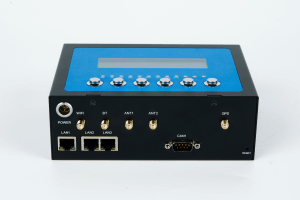A vehicle IoT gateway serves as a central communication and control hub for a wide range of Internet of Things (IoT) applications within vehicles. Here are some of the key uses and functions of a vehicle IoT gateway:
1. Data Aggregation and Processing:
It aggregates data from various sensors and devices within the vehicle, including engine diagnostics, location information, environmental sensors, and more. This data is then processed and utilized for various purposes such as real-time monitoring, performance optimization, and predictive maintenance.
2. Telematics and Fleet Management:
The gateway can be used for vehicle tracking, geolocation, remote diagnostics, and monitoring of driver behavior. This is particularly useful for fleet management, allowing companies to optimize routes, improve fuel efficiency, and monitor vehicle health.
3. Remote Control and Automation:
It enables remote control and automation of vehicle functions, such as starting/stopping the engine, locking/unlocking doors, adjusting climate control, or triggering alarms. This can be useful for security, automation, and remote management applications.
4. Connectivity and Communication:
It provides connectivity with external networks and cloud platforms, enabling communication with centralized servers, receiving over-the-air (OTA) updates, and facilitating integration with external services and applications.
5. Security and Safety:
The gateway enables the implementation of security features such as remote tracking in case of theft, emergency assistance, and the integration of safety systems such as collision detection and emergency response.
6. Integration with Infotainment Systems:
It supports integration with infotainment systems, enabling features such as music streaming, navigation, voice commands, and other entertainment options.
Overall, a vehicle IoT gateway plays a crucial role in enabling connectivity, data exchange, and control in modern vehicles, paving the way for innovative and intelligent automotive applications.
1. Data Aggregation and Processing:
It aggregates data from various sensors and devices within the vehicle, including engine diagnostics, location information, environmental sensors, and more. This data is then processed and utilized for various purposes such as real-time monitoring, performance optimization, and predictive maintenance.
2. Telematics and Fleet Management:
The gateway can be used for vehicle tracking, geolocation, remote diagnostics, and monitoring of driver behavior. This is particularly useful for fleet management, allowing companies to optimize routes, improve fuel efficiency, and monitor vehicle health.
3. Remote Control and Automation:
It enables remote control and automation of vehicle functions, such as starting/stopping the engine, locking/unlocking doors, adjusting climate control, or triggering alarms. This can be useful for security, automation, and remote management applications.
4. Connectivity and Communication:
It provides connectivity with external networks and cloud platforms, enabling communication with centralized servers, receiving over-the-air (OTA) updates, and facilitating integration with external services and applications.
5. Security and Safety:
The gateway enables the implementation of security features such as remote tracking in case of theft, emergency assistance, and the integration of safety systems such as collision detection and emergency response.
6. Integration with Infotainment Systems:
It supports integration with infotainment systems, enabling features such as music streaming, navigation, voice commands, and other entertainment options.
Overall, a vehicle IoT gateway plays a crucial role in enabling connectivity, data exchange, and control in modern vehicles, paving the way for innovative and intelligent automotive applications.
